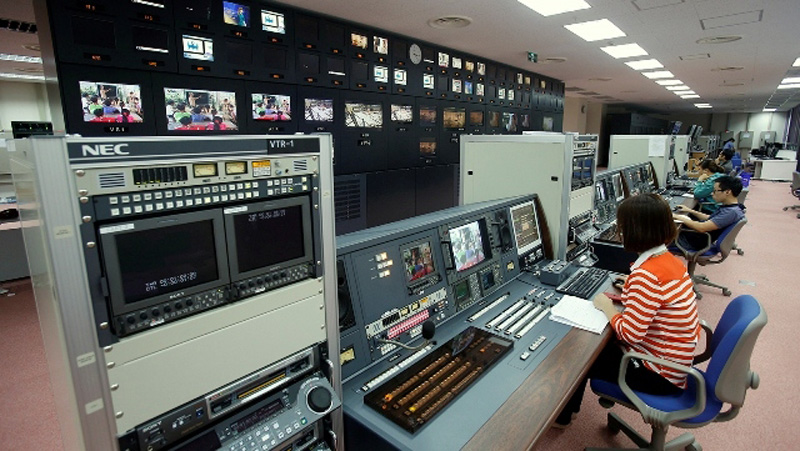
Vietnam Television (VTV) should continue improving the quality of its broadcasting programmes, while harmonising news with other issues on national welfare and those of public concern with great social impact.

VTV is broadcasting on nine channels with a total broadcast time of about 205 hours a day. (Photo: VTV)
The requirement was made by Politburo member and Head of
the Party Central Committee’s Commission for Communications and Education Vo
Van Thuong during a working session with the VTV staff in Hanoi on March 28.
At the meeting, Politburo member Thuong
acknowledged the active contributions made by VTV to national development and
defence, external relations, Party building work and the construction of the
political system.
In the remaining months of 2018, the
station should focus on disseminating the Party and State’s resolutions on the
issues related to Party building and the fight against political and moral
degradation, Thuong said.
It also needs to raise the
responsibility of its leaders and improve the capacity of its reporters and
editors through offering them training, while ensuring information safety, the
senior Party official added.
VTV General Director Tran Binh Minh
reported that his station is broadcasting on nine channels from VTV1 to VTV9
with a total broadcast time of about 205 hours a day, comprehensively informing
the public on all important events. It has also developed paid channels as
VTCcab, SCTV and K + with increasingly improved quality and coverage.
VTV has focused on implementing a
roadmap for converting technologies towards high definition TV programming and
digital terrestrial television during 2015-2020, while continuing to improve
its digital content quality strategy to adapt in the internet era.
Minh also suggested that the Central
Commission for Communications and Education and the Ministry of Information and
Communications take stronger measures to prevent the violation of TV programmes
copyright, as well as strengthening the management and control of information
activities on social networks to prevent fake news.
Source: NDO
With just over a month left until the school summer break, students are eagerly anticipating a period of rest and fun after a year of academic pressure. To provide a healthy environment for the physical development, in addition to the classes that foster talents and enhance the academic knowledge, sports and physical activities continue to attract a large number of children and teenagers.
On April 17th, Hoa Binh Provincial Museum organized a program to promote and introduce the outstanding values of "Hoa Binh Culture” at the Boarding Secondary and High School for ethnic minority students in Mai Chau District.
The Hoa Binh College of Technical Technology, in collaboration with the Hoa Binh Technical and Economic College and the provincial Association of Literature and Arts, hosted a gathering on April 15 to celebrate Laos’ traditional Bunpimay (New Year) Festival 2025 and debut the new book "Nguoi Muong o ban Don” (Muong people in Don village).
In the millennia-long history of national construction and safeguarding, people of all ethnic groups in Hoa Binh have been united and closely bound together to overcome all difficulties and challenges, standing alongside the entire Vietnamese people throughout the history of building and defending the country.
Living green is a healthy, positive, and sustainable lifestyle that not only helps protect
the environment and quality of life but also conserves natural resources and ecosystems.
Among the many ways to embrace this lifestyle, reducing plastic consumption is one of the most impactful.
The women's unions at all levels in Kim Boi district have been making significant contributions to the movement of building cultural life in the local community.
The movement helps improve rural look and the spiritual and material lives of local residents.



